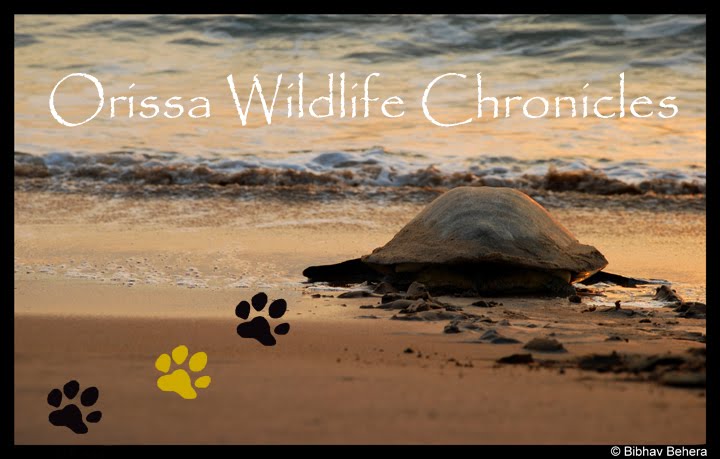The beauty of nature lies in its sheer mysteries. Be it the Aurora Borealis or the way the animals migrate long distances tracking the exact same path at the same time every year. Each time one keeps wondering, how does this happen… and how much one may wonder, it pulls one still deeper into the mystery. But some things when left the way they were supposed to be, bloom into brilliance, amazing everyone. Yet, even a small interference can be catastrophic.
A case of such relevance begins in the coasts of Orissa every year from November to February. Yes, the annual Olive Ridley arribada. The beaches of Orissa host the second largest Olive Ridley nesting sites in the world, second only to Costa Rica. Every year close to 2.5 lakh turtles mate in the shallow waters of the Bay of Bengal and lay eggs primarily on 3 locations: Rushikulya, Gahirmatha and Devi in Orissa. The eggs are laid in number upto 200 per turtle. The female turtles come out of their watery world and ‘invade’ the shores in the thousands. They dig pits in the sand with their hind flippers upto a foot and a half deep and lay their eggs. The eggs take around 45 days to hatch and in early April, the hatchlings emerge: Millions of them scampering towards the crashing waves. Not many would survive past the first few days. Their survival rate is 1 in a 1000 to every egg laid. Each year the adult turtles return to the very shores where they were born reiterating this beautiful mysterious cycle of birth and death.
Death? Yes, each year the turtle season rings the death knell for thousands of turtles. Close to 17000 turtles die every year from illegal trawling and human interference. The beaches get lined with carcasses and rot, with feral dogs, hyenas, wolves, foxes and other predators having a field day. People come on these beaches and see this gruesome graveyard with death everywhere but no one flinches. Not many care to even ponder a why. It’s the rule of nature they say. Is it I ask? Respect the dead people blurt out. Yet, brainless and heartless maniacs are seen sitting on the dead bodies and clicking pictures as if they had claimed trophies to hang up on their walls. That might be still acceptable to certain people as they are dead and what a person does is his call; which brings us to the issue at hand…
Trawlers kill a lot of turtles every year and the ones that survive come to the beaches for nesting. It is a great attraction for eco-tourism for the state and people come to witness this phenomenon in increasing numbers. Most don’t even know what to do and what not to. They get excited at the sight of them and start shouting and man-handling the turtles. They throw lights into their eyes and try to aid them in digging the pits for the eggs.
What they don’t realise are that they are actually making the turtle nervous. Olive Ridleys are very sensitive to light and flashing bright LED lights into their faces is harmful. Also, it is imperative that the process be kept as isolated as possible from humans. I have seen people piggy backing on the backs of the turtles and shooting images of their kids grinning. Is this how we have learnt to preserve our fellow neighbours of the environment? There is no respect for these amazing creatures from the side of humans. Is this what ‘civilised society’ and over 15 years of rigorous education has taught us? It makes my heart jump with joy every time I see a turtle moreso when I see it actually laying eggs. It is a magical experience. But at the same time it outrages not just me but I’m sure all of the ‘sane fraternity’ each time one sees such outrageous activities on the part of people. It saddens my heart with each carcass that I come across walking the beaches, thinking of the great pains and the great distances these beauties endure to come to these locations just to end up rotting on the beaches.
Picture: Shot at Devi River Mouth in January 2009
In the following image I wanted to portray the possible emotion and outcry in the mind of a turtle with human presence and interference fast approaching. What is its fate?
Shot early morning at Rushikulya River mouth on 22nd February 2009
Nikon D80 with Nikon 18-135mm (Full Frame Image)
SS 1/60 | F 7.1 | ISO 140

If we care enough for people, we can care enough for them too. If we can respect people, we can respect them too. If we can live alongside our neighbours, we can live alongside them too. If we can live our own lives… why can’t we let them live theirs too?


That was very informative and revealing. That is the bitter truth and no news channel shows that side of the story. The just portray the goodness of the story,but at times,like this,the ugly side needs to be shown too.
ReplyDeleteYou've done it very well. Very well composed and presented.
Good work bhaiya,I'm a fan of yours!!
I liked it very much...I would like to share one instance when me and my family were in Puri Beach..a huge turtle was lying helpless and manhandled by the people...People teasing its body and as you sited throwing light into its eyes. It was heart breaking..There was no one to help such an innocent creature...I tried to figure out whether it was alive or not...but then i found it was lying dead..Its a shame to the society that such beautiful and rare creatures are handled mercilessly and with inhumanity and barbarously...i felt sorry...
ReplyDeleteI absolutely agree with you Bijeyata. It's a shame how we forget to respect the creatures we share our home with...
ReplyDelete